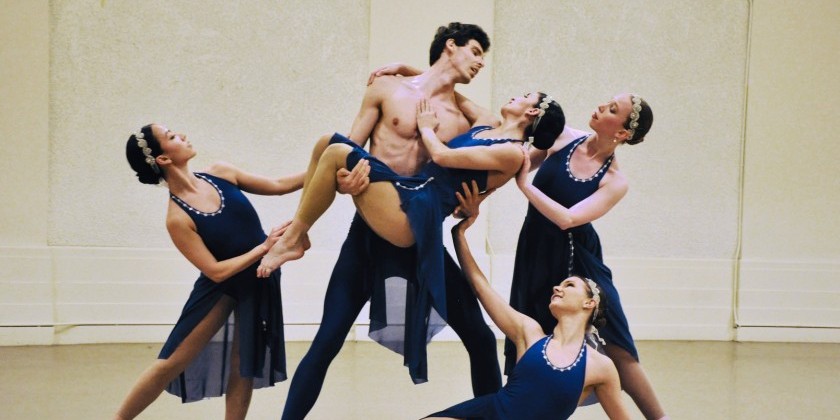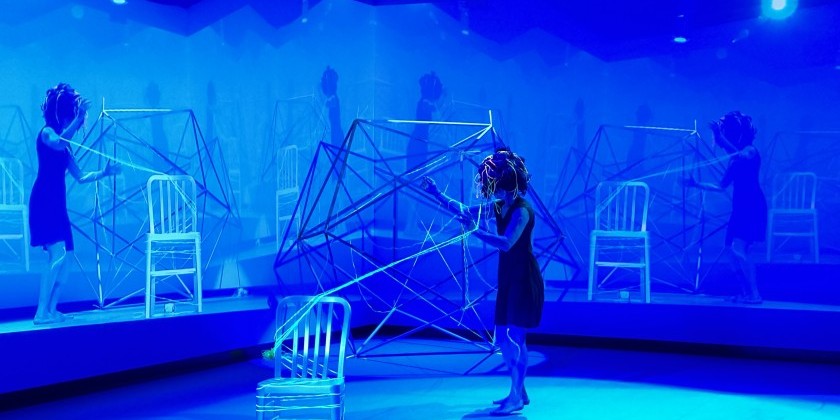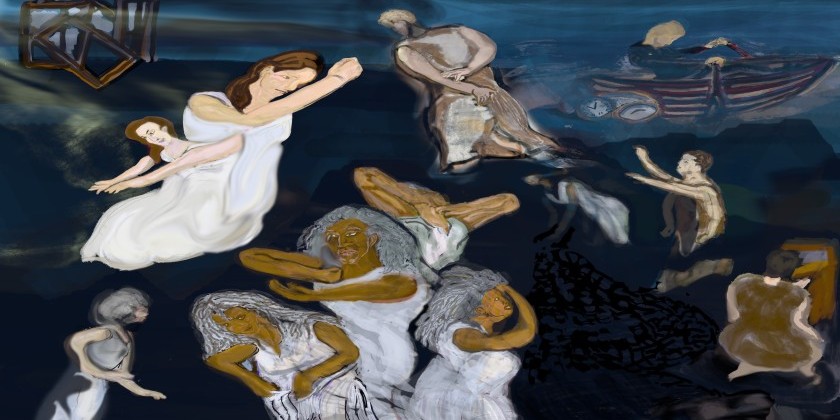AUDIENCE REVIEW: David Neumann/Advanced Beginner Group http://www.advancedbeginnergroup.org/

Company:
David Neumann/Advanced Beginner Group http://www.advancedbeginnergroup.org/
Performance Date:
March 6, 2010 (The run was March 4-13)
Company
David Neumann/Advanced Beginner Group http://www.advancedbeginnergroup.org/
Show / Event Name
iBig Eateri
Performance Date
March 6, 2010 (The run was March 4-13)
Venue / Location
Kitchen, NYC http://www.thekitchen.org/event/180/0/1/
Your Occupation:
graduate student
Last time you moved your body:
this morning
Have you ever seen this company/ before?
Tell us a bit about your history with this group/performer?
No, I had never seen David Neumann’s work before, but my infinitely-cooler-than-me friend told me that I had to see it. She was right.
Why did you go to the show? What did you expect to see?
My friend had told me that his performances are funny, so I expected to be amused. I didn't have many expectations with respect to the movement, but I would have been surprised if it had been formal.
What was your favorite moment(s)? What inspired you?
My favorite moment was during one of the Giselle sections. The performance had a few different threads running through it, and one of them was a deconstruction of Giselle. Now, Giselle is my favorite ballet, and whenever I see a performance that supposedly deconstructs ballet, I think it simply looks like bad ballet. This was definitely bad ballet – arabesques were off to the side rather than behind the dancers, turn-out was virtually non-existent, and arms flapped wildly. What made it work, though, was that the dancers took themselves so seriously even as they looked absolutely terrible by ballet standards. Ballet takes itself very seriously, and Giselle as a ballet takes itself even more seriously. Neumann did a great job poking fun at that, and I think his deconstruction worked in that he kept the most important elements of the ballet. He used the music from the ballet, and the dancers performed steps to the music that resembled the classical choreography just enough that I could imagine that choreography as I watched them dance. While the dancers would exchange the roles of Giselle, Albrecht, and Myrtha, the original story was always recognizable, if fragmented.
My favorite moment was at the climax of the Giselle deconstruction when “Albrecht” (performed by Neal Medlyn) picked up “Giselle” in an arabesque, put his hand over her face, and walked deliberately in a downstage diagonal across the stage. I have rarely laughed so much or so authentically at a performance. They looked simultaneously ridiculous and moving.
I also enjoyed when “Albrecht” (Medlyn) performed a difficult brise passage (a series of jumps with beats) in a downstage diagonal down the line of imaginary wilis. He really went for it, and he looked gloriously awful.
Describe as plainly and as specifically as you can what you actually saw. We are going for description without judgement.
There is no need for complete sentences, phrases and word lists are fine. You can describe these elements or anything you can think of: the artists, the kinds of movement, the qualities of the movement, the use of the stage/space, the musicality/timing...
In the upper left corner of the stage was a magnificent folder chair sculpture. The chairs were open and piled on top of one another, reaching all the way to the ceiling. Of course, there had to be some rope or something holding them into place because it would have been impossible to arrange chairs that way, but they did a great job hiding the means by which they created that sculpture.
In the lower right corner of the stage was an old television that would come on and off. There was a small, more comfortale chair, almost a mini laz-e-boy, that the performers would bring on and off the stage as they needed it.
The performance opened with a man’s deep voice (Deborah Jowitt identifies him as Fred Neumann, David’s father) asking us how many ropes would be needed to keep a hanging body from swinging. Suicide/murder is a sobering image to start with, but Neumann didn’t leave us there for long.
One of the male performers entered the stage with two or three opened folding chairs hung on his body. He had a fast food hamburger and sat down in one of the mini laz-e-boys to eat it.
One of the threads running through the performance was a drunk father talking to his teenage daughter. This was based off of a video of a drunk David Hasselhoff and his daughter (http://www.youtube.com/watch?v=QH3JAp7vMuo&feature=related). The performers performed it again and again, sometimes with two sets of performers at a time. Near the end, “David Hasselhoff” sat down for an interview with one of the women.
Another theme was a conference on the different ways the world could end. This was funny, but it seemed to hold the other storylines together rather than be a storyline in its own right.
Do any images, colors or feelings pop into your head when you think about this show?
Darkness
Sparkly tight pants
A furry vest
Video projections of trees
Hipsters
Would you like to see this performance / company again? Would you recommend it to a friend?
Why or why not?
Yes, certainly. It was one of those performances where I never knew what was happening but I was always sure that I liked it.
What would you like to have seen more of? Less of?
My initial answer would have been that I would have liked to have seen less of the David Hasselhoff sketch. The subject matter was depressing and to have it repeated over and over again was like being forced to drive by a horribly car wreck repeatedly. In retrospect, though, it balanced the goofiness of the Giselle sketch and was a personal counterpoint to the depressive inanity of the conference about all the ways in which the world could end. I still wouldn’t enjoy watching it, but I think the piece would lose some of its depth and murkiness without it.
If you could, what would you ask the choreographer / dancers?
I’d love to hear a step-by-step account of how they created this piece. Neumann included a list of his influences in the program (including his life, Werner Herzog, and others), but I’d like to know how those influences appear in his piece and at what point in the process he brings them in.
I'd also like to know how the group works together. All the performers were great, and Neal Medlyn was particularly stupendous. I'm fairly certain that the creation of this work was a group process, but I'd like to know how they work that.











